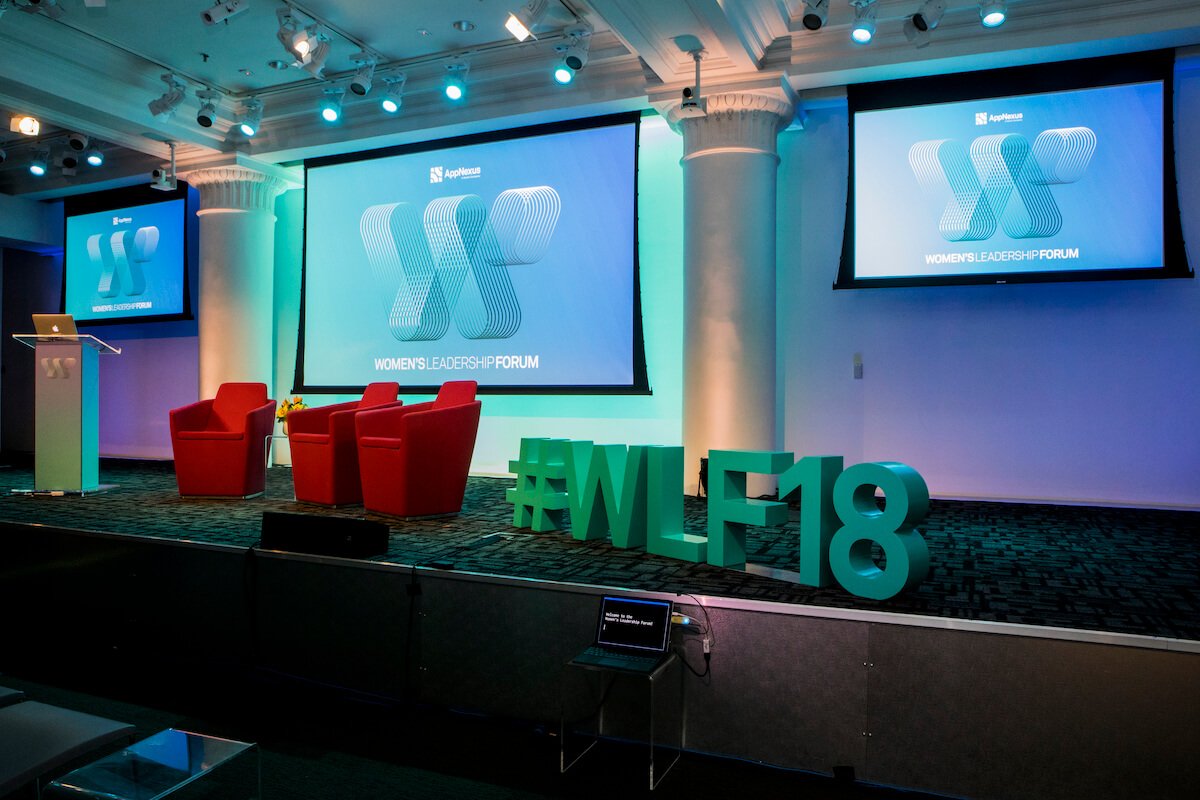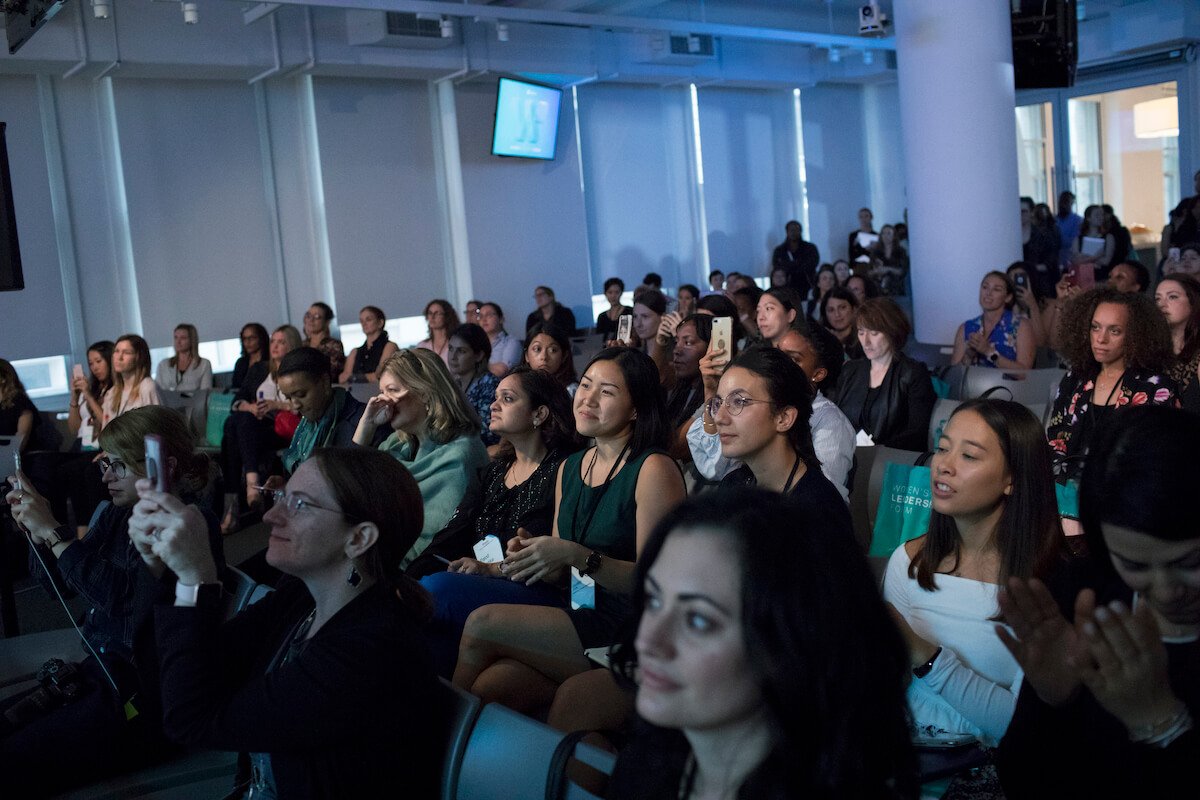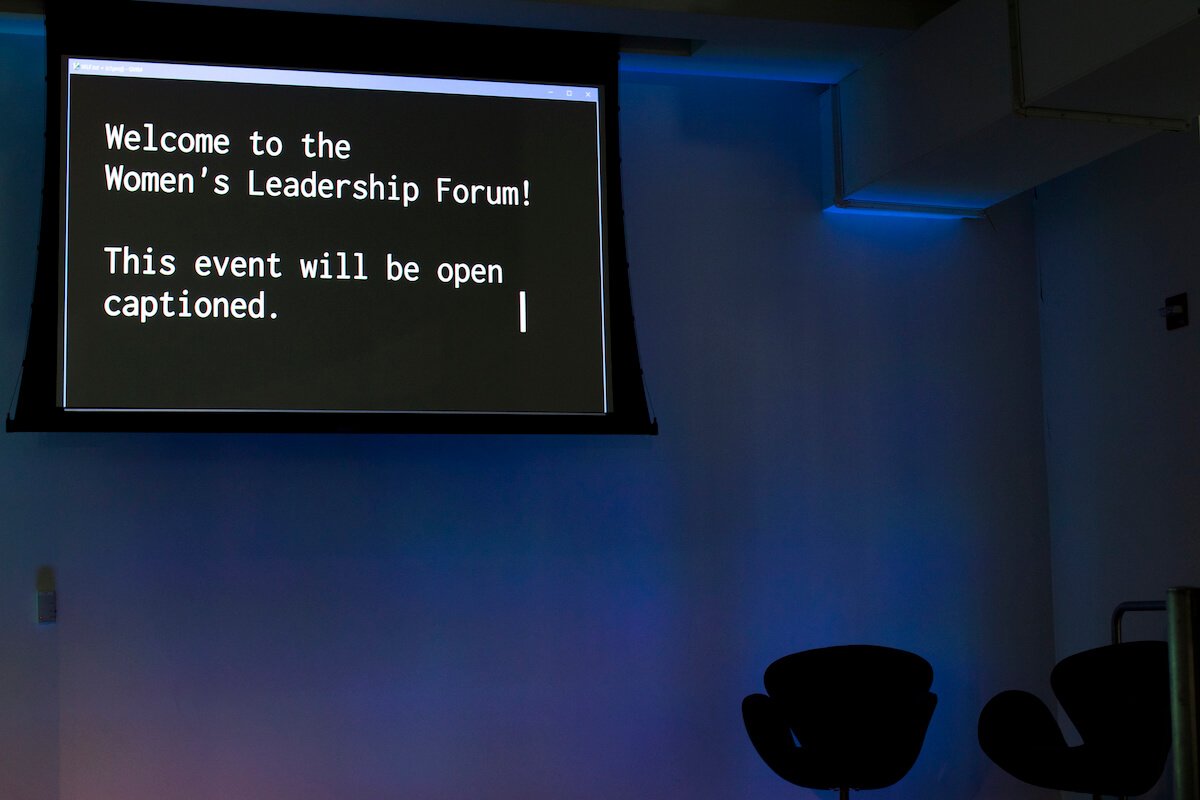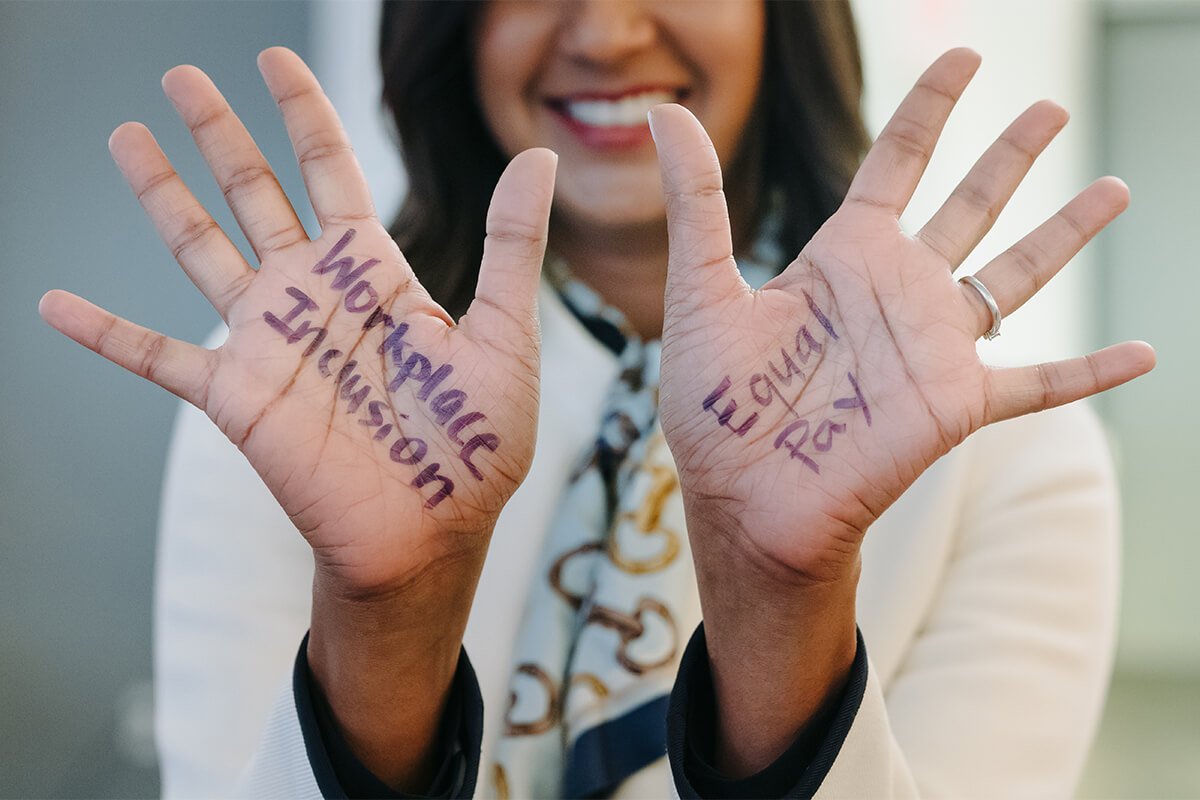Mentor for web designers who want more income, balance, and ease
I help web designers discover the easier path to building a thriving business, their way.
If you’ve been dreaming about making web design your full-time gig or if you’re ready to earn more while working (and stressing) less, then pull up a seat.
I can’t wait to show you what’s possible.
You know web design.
But you don’t really know how to run a web design business. (And that’s okay!)
Go on, admit it. I love it when people toot their own horns. Say it with me: you know how to create a damn good website.
But the client management side of your business? Yeah, that’s where things get tricky.
Whether you earned a fancy design degree or you’ve taught yourself everything you know (thanks, YouTube), there’s one thing we can agree on: learning how to design websites doesn’t teach you anything about running a web design business.
So when it comes to working for yourself and…
Attracting better-fit clients with a healthy budget (and no micromanaging tendencies)
Selling your web design services on a call
Creating a clear project brief (with built-in boundaries)
Establishing trust and credibility with potential clients
Charging more for projects, without the pushback
You’re feeling a little bit lost and overwhelmed.
Not to mention, most mainstream advice gives you the ick…
You’ve spent more hours than you can count watching webinars on “How to get clients on [insert social media platform here]”. And you’ve probably even tried a handful of those freelancing “hacks” for yourself.
But if you’re anything like me, it didn’t take you long to realize that most advice on the internet is geared towards white, English-speaking, US-based web designers with pre-existing networks to “tap into”.
And sure, those “tips and tricks” might work for some people… but if you’ve made your way to my corner of the internet, I’m willing to bet you’re not interested in cold pitching 3rd-degree connections on LinkedIn or doing free work just to build your portfolio.
I’ve been there.
I had to build my web design business while navigating systems that weren’t built for people like me: a woman of color (and at the time) based in Asia.
I had no choice but to learn how to establish my expertise in an industry where marginalized groups are often ignored and underestimated. But I did it. And I did it my way, without squeezing myself into other people’s boxes.
I’m here to show you that you can do it, too.
Hi, I’m Danbee.
As a web-designer-turned-mentor and global inclusion specialist, my work revolves around creating a more inclusive internet.
I want to make it easier for people to build successful online businesses regardless of where they’re from, where they live, or how they identify.
Whether you’re a web designer looking for an easier path to success or a business owner who wants to bring a more globally inclusive lens to their business… Well, consider me your go-to resource.
I want to show you that it’s all possible for you.
Whether it’s through the self-starter resources in my shop, the teaching I do in my courses, or my one-on-one work with mentorship clients, my approach is always the same:
-
I don’t give generic, mainstream advice.
Most resources for web designers aren’t built for everyone.
They certainly don’t acknowledge the challenges of working in a lower-income country, working in your second (or third) language, or wanting to work with clients in a different time zone. We do things differently around here.
-
I won’t force you into uncomfortable strategies.
If the idea of cold emailing makes you want to take a cold shower, or if you’re sick of being told to tap into your non-existent network of past clients, you can take a deep breath.
Here, we prioritize doing things your way.
-
I focus on more than your design skills.
Let’s face it: your design skills are already good enough.
To turn those skills into a profitable business, you need a solid process, stronger project management skills, and a way to stand out from the crowd. That’s what we’ll focus on together.
-
I understand *why* you want more money
You’re not motivated by flashy sportscars or fat stacks of cash. You want to earn enough to not stress over cash flow, so you can be present in your business and your life.
My goal is to get you there, so you can confidently enter the “what’s next?” stage of your journey.
Like all good stories, this one is a bit of a rollercoaster ride.
Which chapter of my story are you most interested in reading?
My Web Design Journey
It feels weird to admit this, but…
I didn’t become a web designer because I wanted to become a web designer. In fact, I sort of fell into it.
I started my business because I wanted to work for myself. The idea of time freedom, location freedom, and financial freedom spoke to my burnt-out-from-corporate soul, and I knew I wanted to do good work for good people without sitting in a boardroom all day. I was techy, good at problem-solving, and had an eye for design, so web design felt like the most natural fit.
Before long, I realized that finding what I was good at was only the first obstacle to overcome. Suddenly, I had to figure out how to run an entire business on my own. Hello, imposter syndrome.
Within 3 years, I grew my web design business to six-figure profits.
This isn’t your overnight success story. I had to overcome plenty of obstacles on my way to that milestone six-figure year, especially as a woman of color living and working outside the Western world.
I was determined to do things my way. I knew there had to be a better way to find clients than cold-pitching people in my network. I wanted to make a steady income without working nights and weekends to meet deadlines. I also knew I wanted to bring my full self to my business, without hiding any part of my multi-layered identity.
So, I got to work. I developed my own processes using my corporate experience. This way, I brought a sense of structure and ease (and sometimes even fun!) to my client attraction, project management, and everything in between.
After refining my process, I started working with better-fit clients and getting more referrals. I booked out my calendar while quadrupling my prices. And in less than three years, my business had grown to six figures of profit — my way.
Building a profitable web design business opened so many doors for me.
This is supposed to be the part where I tell you all about how I felt inspired to use what I’d learned to teach other web designers how to find the success that I did. And sure, that would be absolutely true.
I feel incredibly proud that I carved my own path, and I love creating tools to help other designers do the same. I do a little happy dance for every student who completes my Fast Track program, for every designer who goes through my mentorship program, and for every resource that’s bought from my shop, because I love helping you see there’s no single way to build a thriving business.
But the real measure of success for me came when I stopped chasing the next milestone. When I realized that this reliable, profitable, “boring” web design business had freed up my time and energy to focus on my other passions:
Being fully present in my day-to-day life with my partner, Sean, and our fluffy butt Mari
Traveling the globe, without stressing about fitting flights and sightseeing around project deadlines
I want it all for you, too.
I know what it feels like to want to earn a consistent income from your web design business. And I also know what it feels like to realize there’s space for so much more in your business and your life once you have the privilege of not worrying about money.
If you want to discover the easier, clearer path to earning a full-time income as a web designer, I’d love to support you.
And if you have a sneaky suspicion that a thriving web design business is just one step towards the bigger vision you have for yourself, your business, and your talents… I see you, I understand you, and I’m here to cheer you on, every step of the way.
My Global Inclusion Focus
I spent way too many years hiding who I truly was (all in the name of “success”).
Before going “all in” on my design business, I spent a decade working for tech startups and multinational conglomerates in Sweden, Hong Kong, Indonesia, and Singapore.
As a tech startup founder with a mechanical engineering background, I worked in male-dominated spaces where I was repeatedly undervalued and underestimated based on my gender and age.
And as I climbed the corporate ladder, I became more and more aware of how I was modifying my behavior to fit a white man’s definition of success.
I spoke up in public and challenged coworkers and clients directly without considering their feelings. I diligently severed work life from home life. I even read up on medieval European history so I could carry “intelligent” conversations with influential people at super exclusive black tie events. (Cringe, much?)
In other words, I worked hard (often without realizing) to convey the message, “You don’t have to worry, I’m more like you and your white friends than I’m like the other Koreans.”
I realized I would never fulfill my potential unless I stopped trying to fit into someone else’s box.
As anyone who has ever felt the need to hide parts of their true self will understand, I came to realize that I was deeply unhappy at work — and it was starting to reflect my relationships, my home life, and my mental and physical health.
I desperately wanted to live the full expression of myself. And I started by changing the world I was working within.
I created more inclusive spaces within the walls of my employers. I started women’s networks and diversity initiatives to combat bias and discrimination. I took on the role of an American company’s Asia-based diversity, equity, and inclusion (DEI) ambassador and helped shape their global inclusion strategy.
Despite all of this progress, it didn’t take me long to realize how restrictive the corporate system was. And when a heartbreaking tragedy hit my family, instead of getting the support I needed to take care of myself and my family, I was left scrambling to tend to my team and clients. I felt like I couldn’t share how I felt or what I was going through with the people I worked with every day — it was one of the loneliest moments in my life.
I realized I was done working with and for people who judged me for speaking up and prioritizing people over profits. And a few months later, I left my corporate life behind for good.
Snapshots from a Diversity and inclusion leadership conference during my corporate life:
Things didn’t exactly change overnight.
As a highly-trained, people-pleasing, straight-A student, growing my business wasn’t difficult. But after months of rapid growth, I stopped to take stock and realized my corporate career had come back to haunt me.
I was learning exclusively from white, US-based leaders, educators, and influencers, and doing everything possible to assimilate into a west-centric industry. Taking 3 am calls to accommodate clients. Glossing over microaggressions from strangers, like “I love Korean food,” or “Your name is so exotic.” Not correcting people when they assumed I was American. All in the hopes of getting noticed and being awarded a “She Belongs Here” gold star.
I eventually took a leap of faith and began to share my experiences. It all started with a story about an industry leader who scheduled their virtual event at an inaccessible time for a global audience, decided not to share a replay with its paying customers, and refused to reach a compromise with me when I explained how unfair and infuriating this was.
The community response was incredible.
I quickly realized that many other non-white, non-American business owners had had similar experiences — and also that there was a huge community of entrepreneurs who wanted to make their online spaces more inclusive but weren’t sure how.
I started having more of these conversations — and it paid off tenfold.
The conversations that were started from that single story helped me realize that the way I approached business and design — with diversity, equity, and inclusion (DEI) at the core of everything — was different.
As I started sharing more stories, experiences, and perspectives as a business owner with marginalized identities, I was given opportunities to share that message on bigger platforms and help more people make their businesses more globally inclusive.
Today, as a mentor and educator who leads with inclusion, I finally feel like I’m getting paid to be myself — all of myself.
By showing up as my full, multi-layered, authentic self, I have so much more energy to bring to my work. And (surprise surprise), my income has grown exponentially. Because, as you likely know, when you put people first, the profits often follow.
I love running a business where people can be themselves: one where my customers and mentees feel celebrated and appreciated for who they are, without having to modify their behavior for others.
It feels so good to run a business this way. And I’d love to work with you to create a business that makes you feel like you’re getting paid to be all of you.
I want you to know you’re welcome here.
My vision is to create a more inclusive internet — which means all web designers and business owners are welcome here, even especially if you’re in or from an underrepresented part of the world.
You might be from a country with a lower income, without affordable or reliable internet access, experiencing political instability, vulnerable to the effects of climate change, or where English isn’t widely spoken.
You can still run a successful web design business. And I’m here to give you the resources you need to do it.
How can I help?
Let’s get you set up with the tools you need to move forward. Which sounds most like you right now?
-

“I’m ready for more clients, consistency, and cash.”
“I’ve delivered a few projects and things are working okay, but I’m ready to fast track my way to the next phase of business by upgrading my process and client experience.”
I recommend: Fast Track
-

“I’m stuck on this really specific thing…”
“I already know that there’s something specific I want to work on in my business, like creating better case studies, writing website copy for my clients, or running better sales calls.”
I recommend: Self-Starter Resources
-

“I want some 1:1 support from someone who gets it.”
“I want to create a stable web design business that allows me to work with better-fit, bigger-budget clients. I’d love for someone to help me figure out how to get there my way.”
I recommend: Mentorship Program
Not sure where to start?
My free training has you covered.
It’s called How to Get Clients Consistently as a Freelance Web Designer — Without the Cringe of Cold Pitching or the Awkwardness of Networking Events.
Whether you’re brand new to business or have several years under your belt, you’ll leave feeling crystal clear about what to do differently to earn a more consistent income as a freelance web designer.










